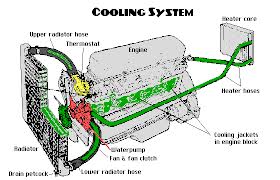Commissioning of Evaporative Cooling Systems
System commissioning is an important project stage that will improve the performance and energy efficiency of a newly installed cooling system. Commissioning is the process of ensuring that systems are designed, installed, functionally tested, and capable of being operated and maintained according to owner’s operational needs. The commissioning requirements are detailed in the project specifications for a new building or a system retrofit project. Proper commissioning will bring about verifiable energy savings, improved temperature and relative humidity control, improved air balance, improved indoor air quality and reduced occupant complaints. It will also help the project to have fewer change orders and improved communication between the design team and the building operating staff.
A good source for information on building commissioning which includes case studies is available through DOE’s Rebuild America at the referenced website. “Commissioning is a systematic process that begins, ideally, in the design phase of a building retrofit project and lasts at least one year after the project is completed. However, it is never too late to commission a commercial building. Existing equipment can also be commissioned to ensure that it operates efficiently and meets the building owner’s and occupants’ current needs and expectations. Commissioning is usually performed at a building owner’s request. Often the owner may hire or assign a representative, who acts as a proxy, and spearheads the project.
Why is commissioning important? Owning and operating a commercial building requires a substantial financial investment. Poor performance means building owners may be losing money. Excessive repair and replacement costs, employee absenteeism, inadequate indoor air quality (IAQ), and tenant turnover costs U.S. building owners and employers millions of dollars each year. Building commissioning reduces this unnecessary loss of money by restoring equipment and building systems to a high level of performance. It ensures that a new building or system begins its life cycle at optimal operation and improves the likelihood that the equipment will maintain this level of performance throughout its life.
The process of commissioning should not be confused with testing, adjusting, and balancing (TAB), the measurement of building air and water flows. The commissioning process, which is much broader in scope, involves functional testing and system diagnostics. Diagnostics and functional testing of equipment and systems helps determine how well building systems are working together. It also helps determine whether the equipment meets operational goals or needs to be adjusted to increase efficiency and effectiveness. A thorough commissioning effort results in fewer installation callbacks, long-term tenant satisfaction, lower energy bills, avoided equipment replacement costs, and an increased profit margin for building owners.”
Another source, the Seattle City Light has prepared a “Standard Commissioning Procedure for Evaporative Cooling Systems” which is a ten-page EAC commissioning report with examples. It is available from:
http://www.ci.seattle.wa.us/light/conserve/BdgComA/bca4.rtf.
















